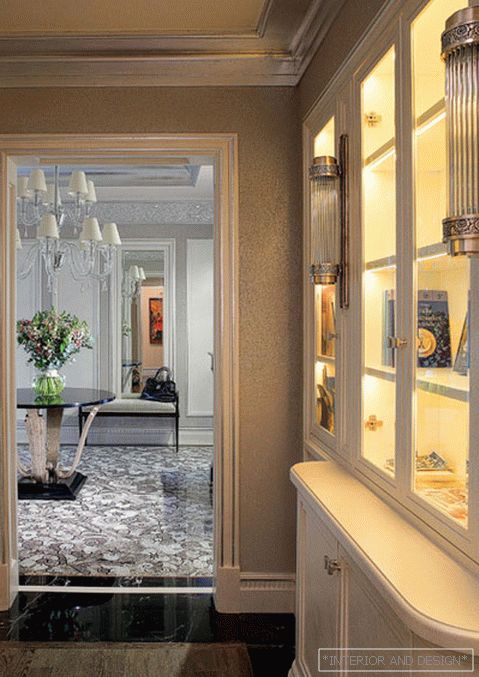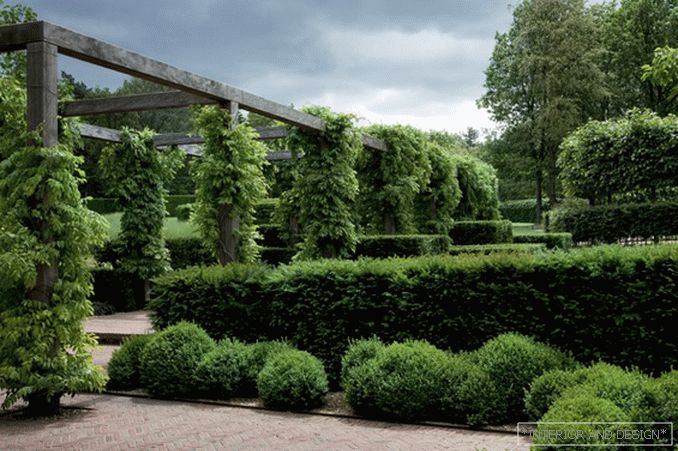World Architect's Day - October 6 - is not by chance that Le Corbusier’s birthday (1887–1965) is celebrated. He is the one who made the leap into the architecture of the XX century, with all its achievements and losses, utopian dreams and fatal falls, hyper-functionality and adaptability, beauty and ugliness. Like or dislike of the master, but the fact remains: without Le Corbusier there is no modern architecture.
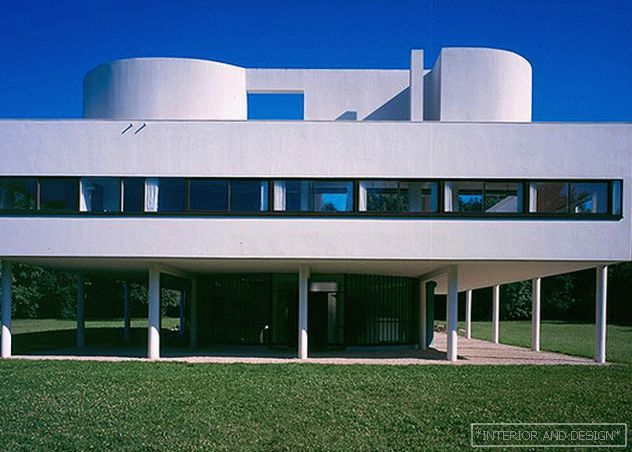 Villa Savoy, Poissy, France, 1928–1931.
Villa Savoy, Poissy, France, 1928–1931. He spent an incredible amount of energy so that new shaping everywhere captured the minds of architects. His ideology is embodied not only in buildings, but also in paintings, in design and in theoretical treatises, sometimes convincing and clear, sometimes - monstrous in style and difficult to completely indistinguishable sense. Le Corbusier, as an influential chess piece, appeared on the architectural modernist field, and at the right moment made several shatteringly important moves. In the implementation of this mission he was helped by the innate ability to develop a variety of creative skills.
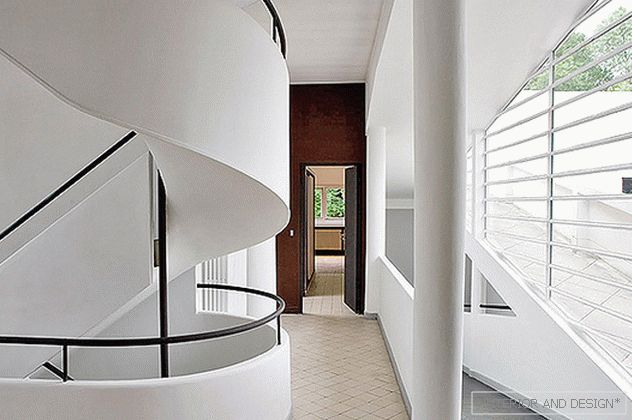 Villa Savoy, Poissy, France, 1928-1931.
Villa Savoy, Poissy, France, 1928-1931. LE CORBUSIER
(1887-1965). Architect, artist, theorist. Rod in La Chaux-de-Fonds (Switzerland). He formulated the concept of construction from large-sized prefabricated elements, “Five starting points of modern architecture”, the Modulor system, etc. The author of the Villa Savoy in Poissy (1929), the House of Tsentrosoyuz in Moscow (1933), a dwelling house in Marseilles (1952), huts “ Cabanon ”(1949), the Church of Notre-Dame-du-O (1955), the National Museum of Western Art in Tokyo (1959), and more. etc. Its buildings are located in the USA, Argentina, Chile; according to its design, the city of Chandigarh in India was built.
Charles-Edouard Jeanneret-Gri was born on October 6, 1887 in provincial Switzerland. From his father, a master of enamels and engravings, he learned how to make elegant drawings for pocket watches. Edouard Jeanneret-Gri made his debut in architecture (a project of the house of Louis Falle) at the age of 18. After graduating from the School of Art at home, he connected his career and personal life with France. The pseudonym "Le Corbusier" Jeanneret-Gri came up, being convinced that everyone himself has the right to determine his own fate and name.
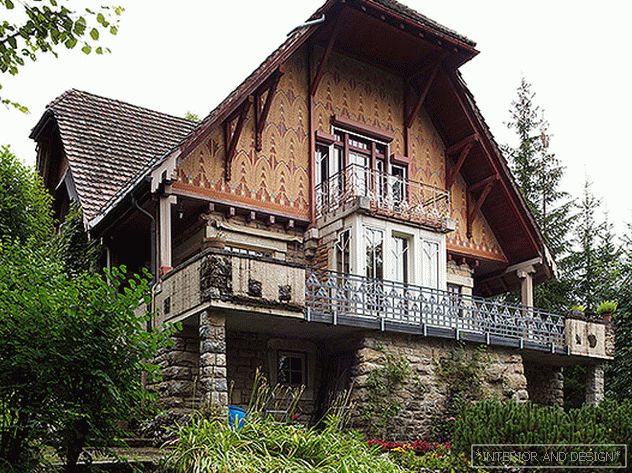 Villa Falle, 1905, La Chaux-de-Fonds, Switzerland
Villa Falle, 1905, La Chaux-de-Fonds, Switzerland After moving to Paris, where the best artists of the era worked, in 30 years he fell into a whirlpool of turbulent international life. Inspired by cubism, Le Corbusier, along with Amed Ozanfan, declares himself a “purist” - a champion of laconism, a fighter with eclecticism and decor. Friends create exhibitions and publish the magazine "New Spirit". In it, Le Corbusier publishes "Five starting points of modern architecture" - a manifesto, the essence of which is in the application of free planning, flat roofs-terraces, strip glazing, free composition of the facade and installation of buildings on supports.
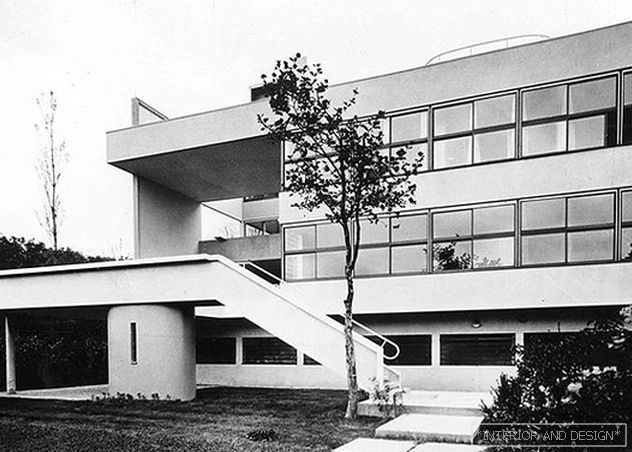 Villa Stein de Monzie, Garsch, France, 1926.
Villa Stein de Monzie, Garsch, France, 1926. 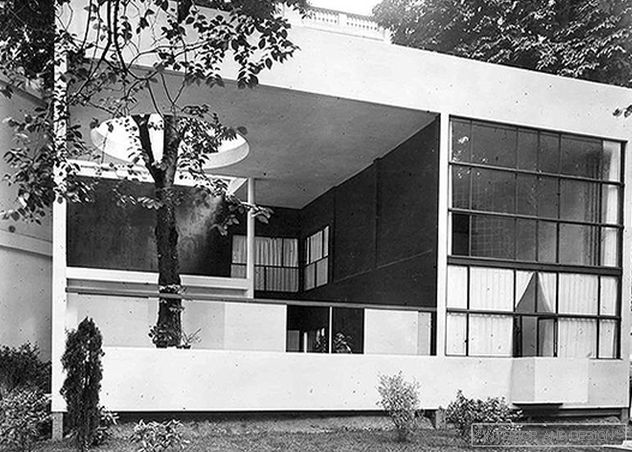 The pavilion of the "New Spirit" at the 1925 International Exhibition in Paris - the materialization of Corbusier program statements.
The pavilion of the "New Spirit" at the 1925 International Exhibition in Paris - the materialization of Corbusier program statements. 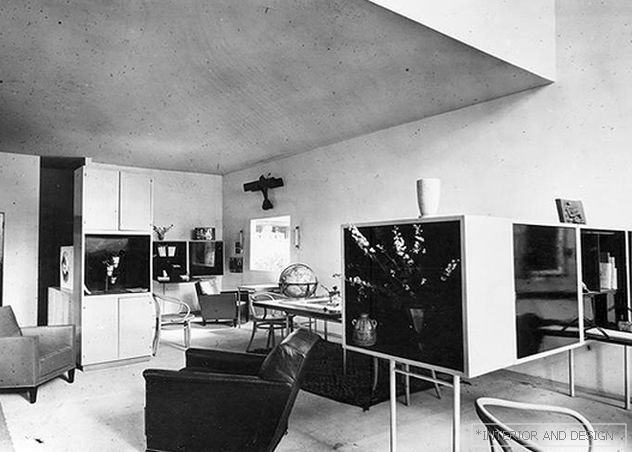 Pavilion "New Spirit", the interior.
Pavilion "New Spirit", the interior. 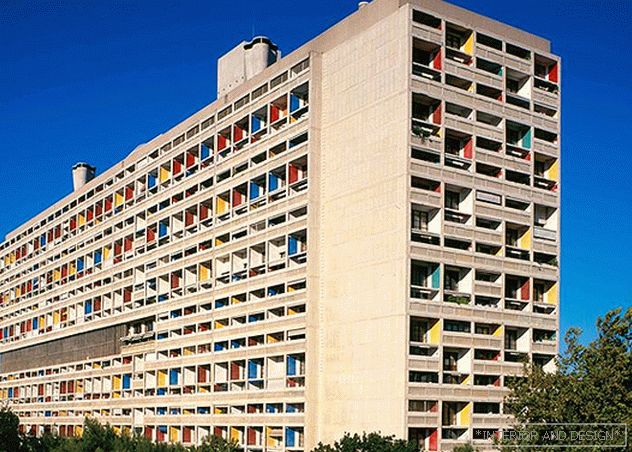 Living unit, Marseille, France, 1945–1952.
Living unit, Marseille, France, 1945–1952. 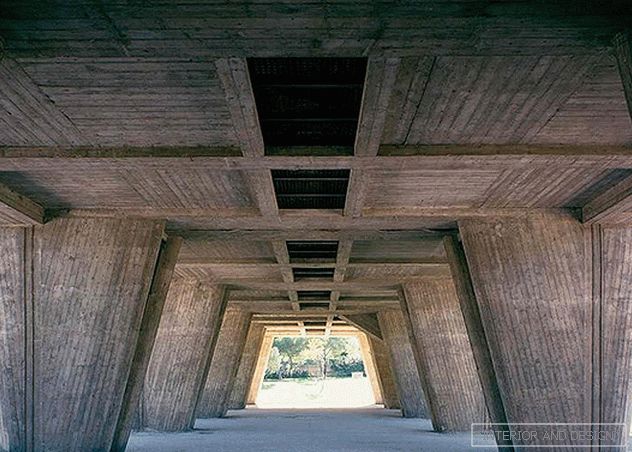 Living unit, Marseille, France, 1945–1952.
Living unit, Marseille, France, 1945–1952. Considering Paris, Istanbul and Rome as “boils” and cities “built at the crossroads of donkey’s hooves,” Le Corbusier creates radical plans for their reconstruction. In the case of Paris, half of the buildings could have been destroyed for the sake of the “ideal” city divided into squares. In the war years, after an unsuccessful experience of working with the government that supported the Nazi regime, the architect devotes all his time to painting and basic research ...
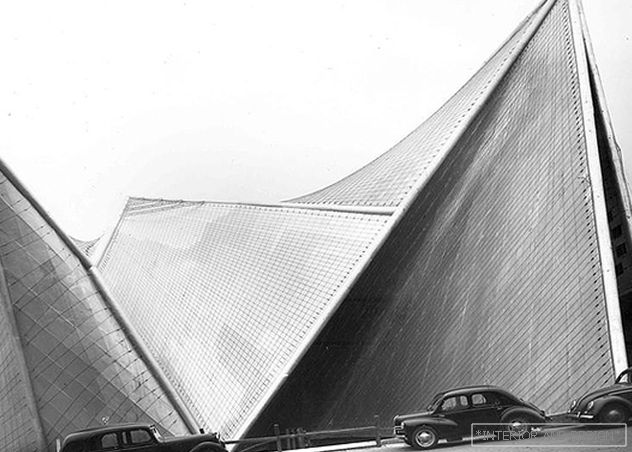 “Electronic Poem”, Philips Pavilion, World Exhibition in Brussels, 1958
“Electronic Poem”, Philips Pavilion, World Exhibition in Brussels, 1958 Throughout his life, Le Corbusier perfected possession of form, line and color, but remained a mediocre draftsman. Nevertheless, over time, the artist gained the upper hand over the architect: his rational architecture became plastic, as if softened under the influence of a brush. By the late period, the concrete church of Notre-Dame-du-Ou, solemnly opened in 1955, belongs. Being an atheist, Le Corbusier set to work under the condition of complete creative freedom. He found inspiration in a large shell found on the beach, which seemed to him an expression of absolute security.
Church of Notre-Dame-du-Ou, Ronchamp, France, 1950–1955.Le Corbusier died drowning in the sea while swimming. He was 77 years old. 59 of them he built unusual buildings. “I wake up in the guise of a fool and all day I try to shake it off myself ... My search, like my feelings, is directed towards what is the main value of life — poetry. Poetry is in the heart of man, and that is why man is able to comprehend the treasures hidden in nature. ”
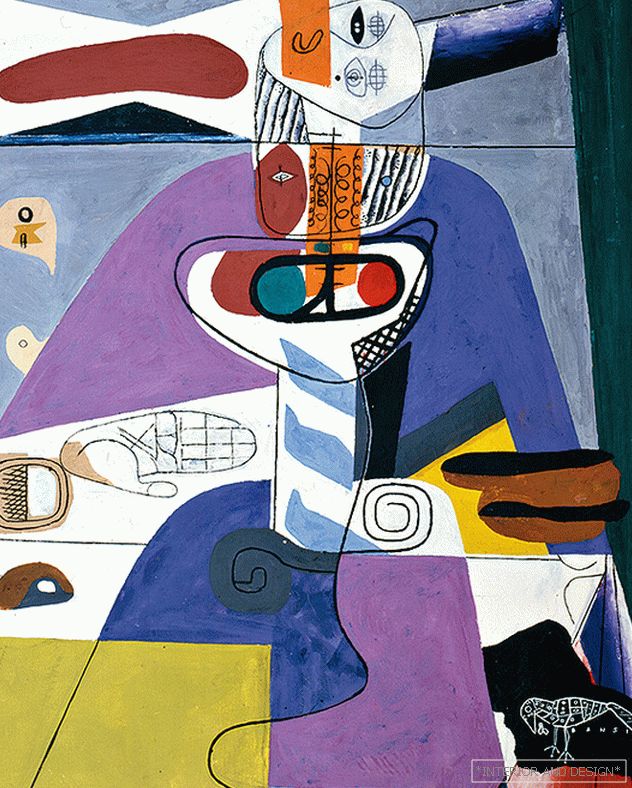 Bull XVI. Х., м. 1958.
Bull XVI. Х., м. 1958. The rights to reprint Le Corbusier’s furniture masterpieces are held by the Italian factory Cassina. From time to time, a variety of designers and manufacturers turn to his iconic name, releasing things “based on” or using concrete projects of the great architect.
“Space, light and order. These are the things that people need as much as they need a slice of bread or overnight stay. ”
+ Related: Cassina: international design and made in Italy
In 2015, the 65th anniversary of the death of Le Corbusier, Arte, published a series of Dots wallpapers. The picture with a dotted line in 1931 became the basis for the collection.
The illuminated division of the Cassina brand - Nemo released the architect’s lamps, following this fact with a presentation at the Milan Furniture Salon and Euroluce in April 2015.
The Renault car concern created a concept car and marked its appearance with an exhibition at the famous and renovated Villa Savoye near Paris, making the premiere an event in the field of modern design.
“You see, the artist is distinguished by the fact that there are moments in his life when he feels more than a man ... I prefer to draw, rather than talk. Drawing faster and leaves less room for lies. ” The works of Le-Corbusier-artist are constantly on the lists of dots for auction sales and among the main hits of art fairs.
+ Related: XXVIII Biennale des Antiquaires: a grand celebration of antiquaries

